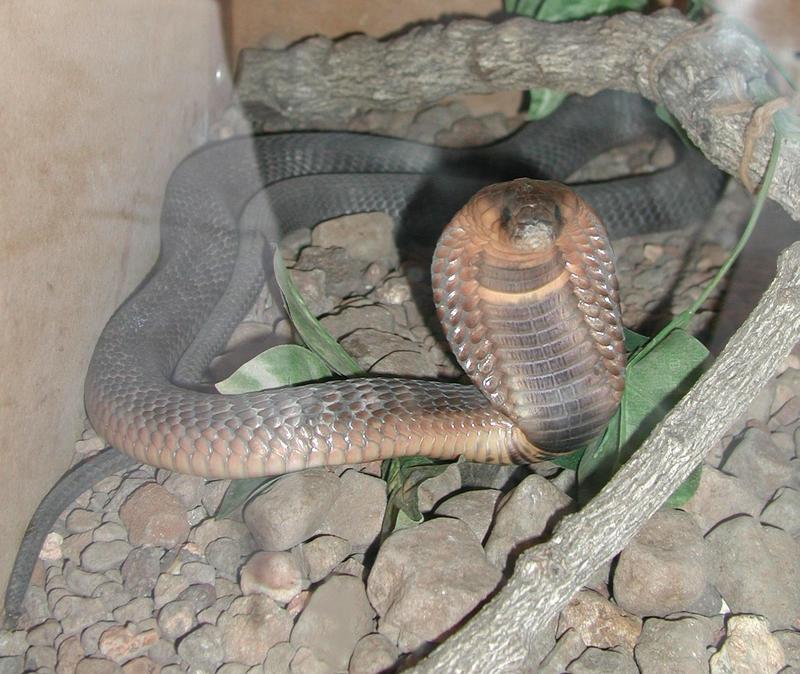Egyptian Cobra (Naja haje) - Wiki Egyptian cobra
From Wikipedia, the free encyclopedia
[Photo] Egyptian Cobra (Naja haje), from images of Africa (http://www.fourmilab.ch/images/eclipse_2001/figures/L14cobra.html), free use. Author: John Walker. License: public domain
The Egyptian cobra (Naja haje), commonly confused with the Snouted Cobra (Naja annulifera), is a type of venomous snake native to North Africa and the Middle East. The Egyptian cobra is the most common cobra in Africa and is responsible for many deaths in Africa. It lives from the Sahara Desert to the Syrian Desert. The Egyptian cobra, like all other cobras, raises its hood when in danger.
The Egyptian cobra is nocturnal. But it can be seen basking in the sun at times in the early morning. females lay 8-33 eggs in termite mounds, and the eggs hatch after an incubation time of 60 days. The Egyptian Cobra's venom is extremely toxic -- it is the second most toxic venom of any cobra, after the Cape Cobra. However, the Egyptian cobra is considered to be much deadlier than the Cape cobra because it is larger, more aggressive and can inject more venom per bite.
The bite of the Egyptian cobra was proven to induce quick and painless death, and is considered by many to be the serpent used by Cleopatra VII to aid her demise. A stylised Egyptian Cobra, representing the goddess Wadjet, was the symbol of sovereignty of the pharaohs, and therefore, it is also called Uraeus serpent.
This snake preys on small mammals, lizards, toads, and other snakes, including the puff adder and Cape Cobra.
The main characteristic of an Egyptian cobra is the head and the hood. The head is large and depressed with a broad snout. The cobra's eyes are large with a round pupil. Its neck may range from 15-18 cm wide.
The Egyptian cobra garnered increased attention in Canada in the fall of 2006 when a pet cobra became loose and forced the evacuation of a house in Toronto for more than six months when it was believed to have sought refuge in the home's walls.
The Egyptian cobra may grow to 5'-6'8" (1.5-2m) in length and specimens as long as 8' have been seen in some areas.
http://en.wikipedia.org/wiki/Egyptian_cobra
| The text in this page is based on the copyrighted Wikipedia article shown in above URL. It is used under the GNU Free Documentation License. You may redistribute it, verbatim or modified, providing that you comply with the terms of the GFDL. |
